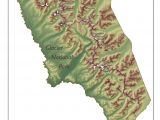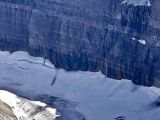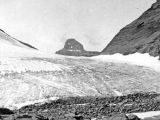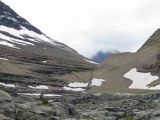Apparently, folks in the US will soon have to come up with a new name for their Glacier National Park. This is because, due to climate change and global warming, this national park stands to soon lose all its glaciers.
In fact, a recent report released by the US Geological Survey (USGS, for short) says that, over the past few decades, the number of glaciers that this national park accommodates for has dropped from 150 to under 30.
Judging by how things are going, the park in the state of Montana stands to lose even more glaciers in the years to come, the USGS warns. Hence, it can be argued that it is only a matter of time until it is no longer worthy of its name.
Documenting ice loss in this national park
To document ice loss in the Glacier National Park on the border with Canada, USGS researchers turned to studying so-called repeat photos of the region. What this means is that they looked at pictures taken in different years but showing the same area.
True, the Glacier National Park was only established in May, 1910. Still, the scientists behind this investigation went as far back as 1850. In those days, the region was home to an impressive 150 glaciers.
However, recent photos of this corner of the US show that presently the Glacier National Park is home to merely 26 ice sheets. What this means is that, in just a few decades, well over 100 glaciers were lost, researchers with the USGS explain.
What's more, it appears that, of the glaciers that still exist in the region, many have shrunk to a considerable extent. In some cases, remaining glaciers are about two thirds smaller than they were back in the year 1850.
Why are these glaciers shrinking?
According to the USGS, the country's Glacier National Park is losing its glaciers due to a combination of factors. A considerable increase in local temperatures is one of the environmental shifts that need be blamed for their demise.
Thus, recent figures indicate that that the region that serves as a home for this park is now 1.33 degrees Celsius (2.29 degrees Fahrenheit). This might not sound like a lot to us ordinary folks, but the fact of the matter is that glaciers do not take lightly to such changes in their environment.
Besides, it appears that, as climate change and global warming continue to progress, the amount of snow that falls in the area yearly is steadily decreasing. This basically means that, without their asking for it, the glaciers are now on a diet.
“Analysis of weather data from western Montana shows an increase in summer temperatures and a reduction in the winter snow-pack that forms and maintains the glaciers. Additionally, rain, rather than snow, has been the dominant form of increased annual precipitation in the past century,” the USGS explains.
The consequences of losing these glaciers
The thing about glaciers is that they aren't just Mother Nature's way to show off. As explained by specialists, such ice sheets help store water. When summer comes, they release it and feed streams in their home region.
Studies have shown that the water released by glaciers does more than just help natural ecosystems help with drought periods. It also helps regular stream temperatures, and in doing so, it benefits several aquatic species.
Specialists estimate that, come 2030, the Glacier National Park in Montana, US, will be entirely without ice sheets. When this happens, the region will not only stop attracting tourists, but will also experience significant changes in terms of biodiversity.
“Without glacial melt water, summer water temperatures will increase and may cause the local extinction of temperature sensitive aquatic species, disrupting the basis of the aquatic food chain,” USGS researchers say.
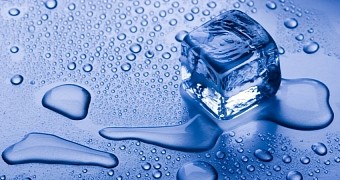
 14 DAY TRIAL //
14 DAY TRIAL // 
